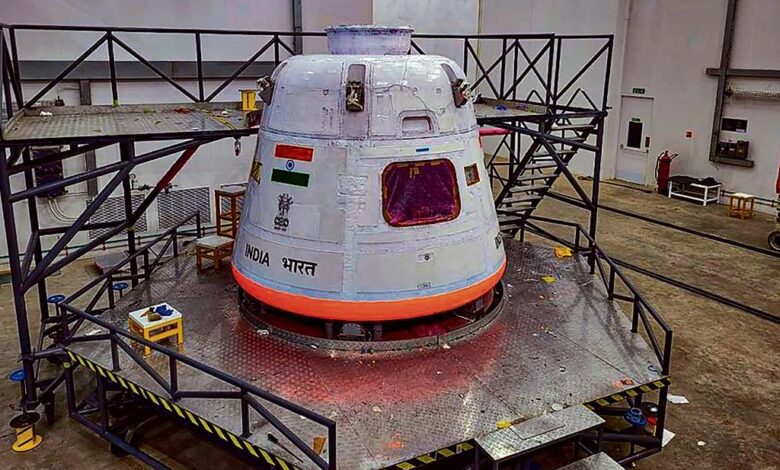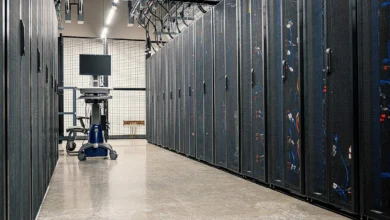ISRO to conduct first test of Gaganyaan Mission on Oct 21
The 'crew module,' or the portion of the vehicle where the Indian astronauts would be housed, will be tested during the test, which will take place at the Satish Dhawan Space Centre in Sriharikota.

In advance of the Gaganyaan mission, which will be India’s first manned space trip, on October 21, the Indian Space Research Organization (ISRO) will conduct the first of several test flights, according to Jitendra Singh, Minister of State for Space, Science, and Technology.
The ‘crew module,’ or the portion of the vehicle where the Indian astronauts would be housed, will be tested during the test, which will take place at the Satish Dhawan Space Centre in Sriharikota.
The module will be launched into space, returned to Earth, and recovered after touching down in the Bay of Bengal. According to Mr. Singh, the Navy forces have already begun practice operations to recover the module. ‘Crew escape’ technology will be present in addition to the crew module. This escape device is intended to separate should a problem arise when the spaceship ascends into orbit and return the crew to the sea safely, where they will be picked up by Navy troops.
The module will be the same as the one deployed to space in the first test, known as Test Vehicle Abort Mission (TV-D1), with the exception that it will be “unpressurized.”
Crew Escape Procedures
A single-stage liquid-fueled rocket called the TV-D1 test vehicle was created for this abort mission. The crew module and crew escape systems make up the payloads, which will simulate the abort scenario during the ascent trajectory corresponding to the predicted Mach number of 1.2 for the Gaganyaan mission (1 mach is equal to 330 meters per second, or the speed of sound.
At a height of roughly 17 km, CES with CM will be detached from the Test Vehicle. Then, the abort sequence will be carried out automatically, starting with the separation of the CES and the deployment of a succession of parachutes, and ending with the safe touchdown of the CM in the sea, around 10 km off the coast of Sriharikota, according to a statement from the ISRO
According to Mr. Singh, if this test is successful, it will pave the way for the first unmanned “Gaganyaan” mission and ultimately a manned journey to low Earth orbit. The female robot astronaut “Vyommitra” will go on a test trip next year before the final manned “Gaganyaan” mission, he continued.
The Gaganyaan mission is expected to be executed in the second half of next year.
Gaganyaan, India’s ambitious human spaceflight mission, holds paramount importance for the Indian Space Research Organisation for several compelling reasons. Firstly, it signifies India’s prowess in space technology, showcasing the nation’s capabilities to execute complex missions. By venturing into human spaceflight, ISRO demonstrates its mastery in engineering, materials science, and astronaut safety protocols, elevating India’s status in the global space community.
Secondly, Gaganyaan fosters scientific innovation and research. The mission involves rigorous experiments, from studying human physiology in microgravity to testing new technologies for space habitats. These endeavors yield invaluable data, contributing not only to space exploration but also to fields like medicine, materials science, and environmental research on Earth.
Furthermore, Gaganyaan inspires and educates. It ignites curiosity among the youth, encouraging them to pursue careers in science, technology, engineering, and mathematics (STEM). This mission serves as a beacon of aspiration, motivating generations to come, fostering a culture of scientific inquiry and discovery.
Paramount importance for ISRO and the nation as a whole.
Additionally, Gaganyaan enhances international collaboration. By venturing into human spaceflight, India becomes a significant partner in global space endeavors, collaborating with other space agencies, sharing knowledge, and contributing to the collective advancement of humanity’s exploration of the cosmos.
In essence, Gaganyaan symbolizes India’s technological prowess, scientific advancement, educational encouragement, and global collaboration, making it a mission of paramount importance for Indian Space Research Organisationand the nation as a whole.
You might also be interested in – ISRO Chairman reveals aspirations of an Indian Space Station



